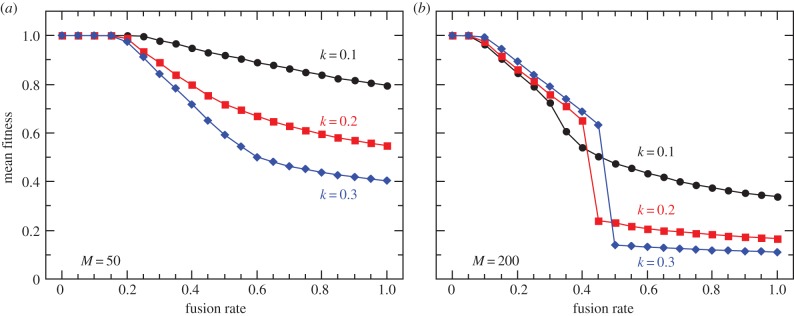Figure 4.

Mean equilibrium population fitness as a function of the fusion rate for two cell sizes, M = 50 (a) and M = 200 (b). Three curves correspond to three values of mutant reproductive advantage k. Owing to the horizontal spread of mutants and reduced variation there is a significant cost associated with sexual fusion and mixing. Three modes of symbiont proliferation can be distinguished corresponding to three ranges of the fusion rate. With rare fusions, selfish proto-mitochondria arise and stay confined within distinct lineages, and are easily eliminated by selection, which results in high mean fitness. Increasing fusion rate allows for a limited spread of deleterious symbionts, leaving the rest of the population mutant-free. A fast transition occurs after the critical rate of cytoplasmic mixing is reached, at which point most of the population is overtaken by the selfish proto-mitochondria. Endosymbiont mutation rate is set to 10−5. (Online version in colour.)
